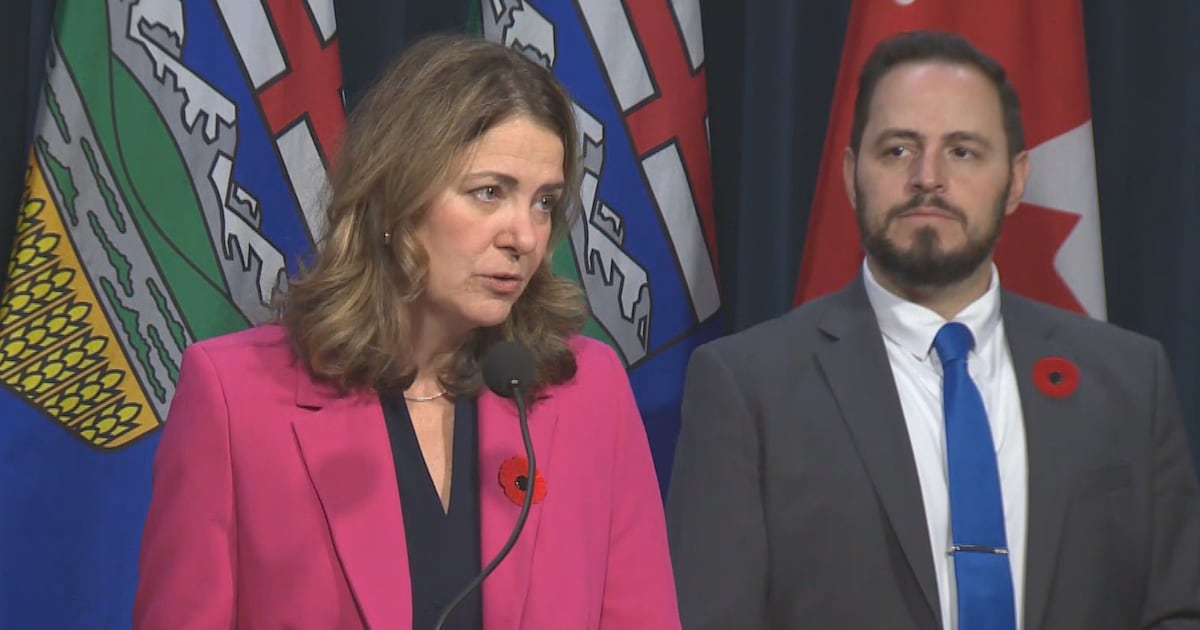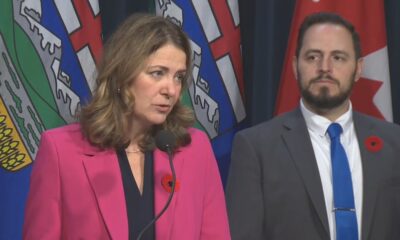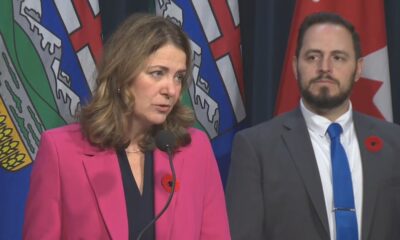Education
Alberta Premier Launches New Committee to Tackle Classroom Issues

Alberta Premier Danielle Smith announced on October 7, 2023, the formation of a new committee aimed at addressing the challenges posed by complex and overcrowded classrooms across the province. This initiative, named the Class Size and Complexity Cabinet Committee, is expected to offer practical solutions to ongoing issues that have impacted negotiations between the Alberta government and educators.
Smith, alongside Education Minister Demetrios Nicolaides, revealed the committee’s creation following the government’s passage of Bill 2, which mandated teachers to return to work after a brief strike. During a press conference in Calgary, Smith emphasized the necessity of a comprehensive approach to address the multifaceted needs of students and educators.
Committee Composition and Goals
The newly established committee will comprise 11 members, including Smith and Nicolaides, along with representatives from various government ministries. Notably absent from the committee’s previous iteration, the Alberta Teachers’ Association (ATA) will now play a role in the discussions. This inclusion reflects a shift in the government’s approach, as ATA officials had previously criticized the lack of teacher representation, asserting that their insights are crucial to understanding classroom complexities.
The premier described the need for cross-ministry coordination, stating, “Kids we’re dealing with have complex needs.” She highlighted that some students may require services from children’s services, while others might need lifelong support. As such, ministers from relevant departments, including Mental Health and Addiction, will contribute to the committee’s discussions. Smith expressed confidence that this holistic strategy would help optimize resource allocation and improve teaching conditions.
Challenges and Resource Allocation
Smith pointed out that Alberta has approximately 51,000 teachers serving around 750,000 students. According to her calculations, ideal class sizes would average between 13 and 14 students per teacher. However, she noted that many teachers are not currently in classrooms, which complicates the situation.
She also mentioned the disparity in the number of educational assistants across different school districts, which can impact the quality of support provided to students with special needs. “If we have the same complexity across the board, you do need to have those extra hands to help the kids with additional learning needs and medical needs,” she stated, reinforcing the necessity for a coordinated effort across different educational sectors.
Smith recognized that issues of classroom size and complexity are particularly pronounced in urban areas such as Calgary, Edmonton, and Red Deer. The committee will focus on identifying classrooms with the highest needs and reallocating resources accordingly to enhance the learning environment.
In response to questions regarding why classroom size management is not solely the responsibility of school boards, Smith acknowledged the varying situations in different districts. She explained that negotiating a specific pupil-teacher ratio at the bargaining table could be misleading, as many educators hold administrative roles outside of the classroom.
Legal Challenges and Future Implications
The announcement of the new committee comes as the ATA prepares to challenge Bill 2 in court. ATA President Jason Schilling stated that this legal action is crucial for upholding the rights of educators. “Our message to the government is simple: You may not silence teachers in the legislature with Bill 2, but you cannot silence them in the courts,” Schilling asserted.
Smith defended the government’s decision to invoke the notwithstanding clause, which allows certain legislation to override legal challenges. She maintained that the government’s actions are necessary to ensure the continuity of education in Alberta.
As the committee begins its work, the premier’s emphasis on collaboration and resource allocation signals a potential shift in how educational challenges will be approached in the province. The involvement of teachers and educational stakeholders may provide a more comprehensive perspective on the complexities within Alberta’s classrooms, potentially leading to sustainable improvements in educational outcomes.
-

 World4 months ago
World4 months agoScientists Unearth Ancient Antarctic Ice to Unlock Climate Secrets
-

 Politics3 days ago
Politics3 days agoSecwepemc First Nation Seeks Aboriginal Title Over Kamloops Area
-

 Entertainment4 months ago
Entertainment4 months agoTrump and McCormick to Announce $70 Billion Energy Investments
-

 Lifestyle4 months ago
Lifestyle4 months agoTransLink Launches Food Truck Program to Boost Revenue in Vancouver
-

 Science4 months ago
Science4 months agoFour Astronauts Return to Earth After International Space Station Mission
-

 Technology2 months ago
Technology2 months agoApple Notes Enhances Functionality with Markdown Support in macOS 26
-

 Top Stories4 weeks ago
Top Stories4 weeks agoUrgent Update: Fatal Crash on Highway 99 Claims Life of Pitt Meadows Man
-

 Sports4 months ago
Sports4 months agoSearch Underway for Missing Hunter Amid Hokkaido Bear Emergency
-

 Politics3 months ago
Politics3 months agoUkrainian Tennis Star Elina Svitolina Faces Death Threats Online
-

 Politics4 months ago
Politics4 months agoCarney Engages First Nations Leaders at Development Law Summit
-

 Technology4 months ago
Technology4 months agoFrosthaven Launches Early Access on July 31, 2025
-

 Top Stories2 weeks ago
Top Stories2 weeks agoFamily Remembers Beverley Rowbotham 25 Years After Murder





















